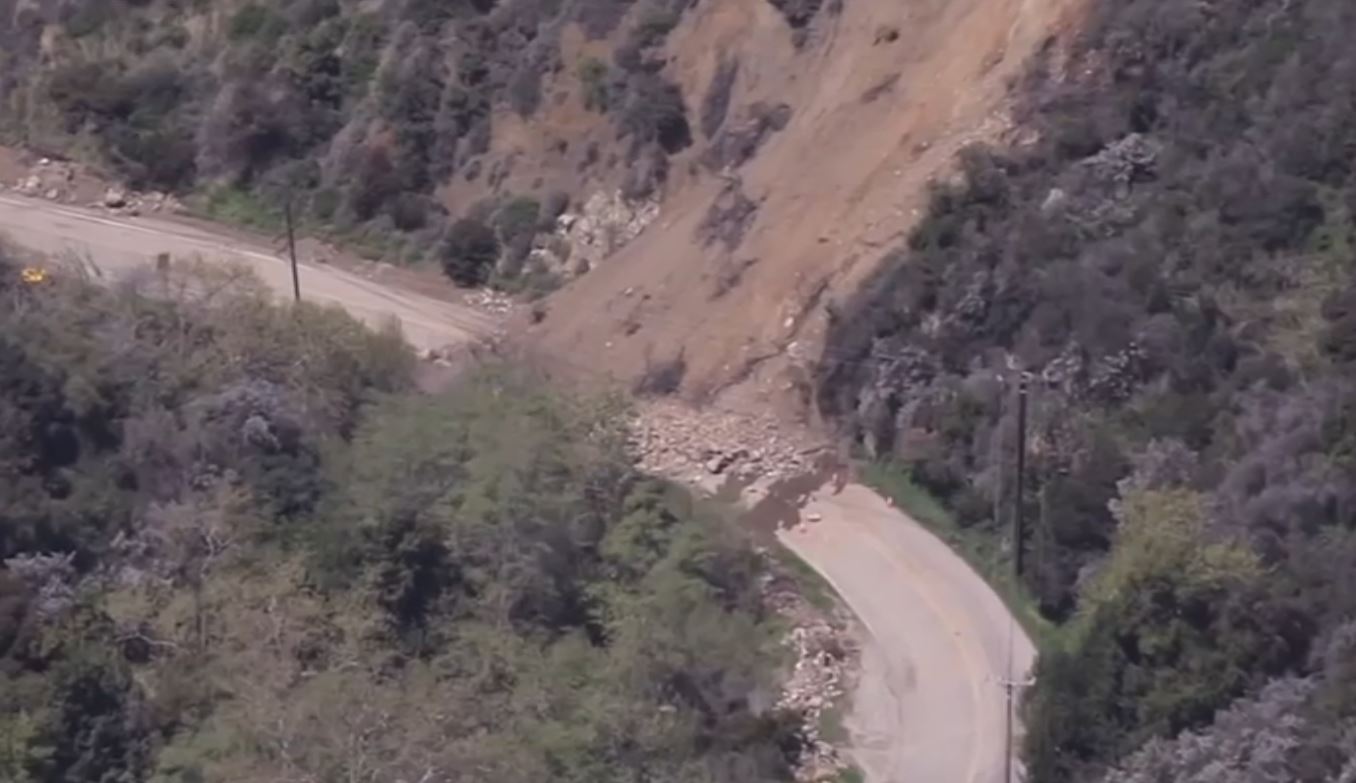No matter what the disaster -- mudslides, wildfires or earthquakes -- a post-disaster plan and practice can be keys to survival.
Earthquakes Section: Maps, Earthquake Myths
“You need to have a plan especially for your family,” said Ken Kondo, program manager with the Los Angeles County Office of Emergency Management. “Know exactly where you live and what are the hazards that you are living in."
Everyone in Southern California needs to include a meeting place in their family emergency plan.
“Maybe it’s a park. Or maybe it’s a location in maybe another county. Possibly another state”, said Kondo.
And make sure everyone has the numbers for at least two out-of-area contacts. Kondo’s main contact is in Texas.
“I can just call him when the cell phone towers are back and then I’m able to get an update of where my family is, how my child is doing, and having that peace of mind,” said Kondo.
Other Suggestions:
- Find more than one evacuation route.
- Know how to turn off you utilities in advance. “Listen to what the utility companies are telling you because they have certain criteria that they’ll recommend,” said Kondo.
- Know emergency protocols fo children in school and family members in senior centers.
- Look for safe places in every room of the house. "If there’s an earthquake, do you know where the tables are? The sturdy tables where you can drop, cover and hold on?” said Kondo.
- Set aside extra medicine.
- Make special provisions for family members and pets who need more help. “If you have family members or loved ones that speak different languages or may have disabilities and access and functional needs, make sure you plan ahead,” said Kondo.
- Talk about your plan.
Kondo relates it to pro-athletes. He points out that they never stop practicing. “Preparedness is the key to survival,” said Kondo.
Local
Get Los Angeles's latest local news on crime, entertainment, weather, schools, COVID, cost of living and more. Here's your go-to source for today's LA news.
The county also recommends several websites for more information on how to prepare for a quake:
County of Los Angeles Emergency Survival Guide
In coordination with the County of Los Angeles Board of Supervisors, the Chief Executive Office, Office of Emergency Management has prepared a comprehensive guide to emergency preparedness intended to help the residents of the County of Los Angeles to better prepare for, respond to, and recover from disasters.
The Emergency Survival Guide features helpful tips and information for residents to prepare for fires, floods, earthquakes, pandemic flu, terrorism, extreme weather, and tsunamis.
The Emergency Survival Guide is available at http://lacounty.gov.
Emergency Survival Program (ESP)
The Emergency Survival Program (ESP) is designed to help the public prepare for earthquakes and other emergencies by encouraging them to take a different preparedness step each month of the year.
We have a variety of public information materials to make it easy for families to prepare for emergencies. Some of these include our ESP Family Steps to Survival guide, ESP Activity Book for Kids, Neighborhood Preparedness plan, etc.
We encourage everyone to take advantage of the wealth of information that is provided by ESP.
Log on to our ESP website at www.espfocus.org to get the free ESP information.
Emergency Preparedness Checklists “10 Essential Items”
To prepare County residents to prepare for and survive a major earthquake, tsunami, fire, flood, act of terrorism and/or other disasters, the County of Los Angeles Office of Emergency Management has developed through its Emergency Survival Program an emergency preparedness checklist of “10 Essential Items.”
For more information, please access www.espfocus.org.
INDIVIDUALS WITH DISABILITY, ACCESS AND FUNCTIONAL NEEDS
Specific Needs Awareness Planning (SNAP)
To better prepare the County of Los Angeles residents for natural and man-made disasters who have access and functional needs including those relating to physical, medical, sensory, cognitive or age-related, the County has made available a voluntary disaster registry, Specific Needs Awareness Planning (SNAP).
The SNAP registry is an Internet-based system that allows residents to provide information, which is kept confidential, to public safety officials about their access or functional needs. SNAP does not guarantee priority response to the registrants, but it assists emergency response officials in planning and responding to the requirements of people with access and functional needs during a disaster by integrating database and mapping technology together.
To register for SNAP, please go to http://snap.lacounty.gov and click on “Register Now.” Registrations can be made on an individual basis or as a group. Those individuals who do not have access to the Internet or may require additional assistance can ask a family member, friend or caregiver to register for them.
EARLY WARNING SYSTEMS AND EVACUATION ROUTE SIGNAGE
Alert LA County
County of Los Angeles residents and businesses can voluntarily register their land line telephone numbers, mobile telephone numbers, and e-mail addresses with Alert LA County.
The County’s mass notification system will contact residents and businesses only if they are in an impacted area due to an emergency or disaster.
Alert LA County is a component of the overall emergency notification plan and should not been seen as the only means of emergency notification. Areas with existing notifications systems may continue to use their own system independent of the Alert LA County.
To register online for Alert LA County, please go to http://www.lacounty.gov.
Tsunami Evacuation Route Signs in unincorporated Marina del Rey
In an ongoing effort to provide County of Los Angeles residents with vital tsunami safety information, the Office of Emergency Management and Department of Public Works have posted tsunami evacuation route signs throughout the unincorporated areas of Marina del Rey. In the event of a Tsunami Warning, residents and visitors will be able to follow these posted signs along a number of optimum evacuation routes to safety.
COLLABORATIVE PARTNERSHIP PROGRAM
Coordinated Agency Recovery Effort (CARE)
Created as a result of a motion by Supervisor Michael D. Antonovich after the 2009 Station Fire, the largest recorded wildfire in the County of Los Angeles history, the Department of Public Works launched the Coordinated Agency Recovery Effort (CARE) program. CARE is comprised of County departments that include Fire, Sheriff, and Office of Emergency Management to coordinate emergency response planning and public information in the event of mud and debris flow incidents in Los Angeles County.
For more information, please go to http://dpw.lacounty.gov/care/.
EXERCISES AND TRAININGS AVAILABLE TO THE PUBLIC
Community Emergency Response Team (CERT)
The County of Los Angeles Fire Department (LACoFD) Community Emergency Response Team (CERT) program serves to educate citizens about disaster preparedness for hazards that may impact their areas and trains them in basic disaster response skills, such as fire safety, light search and rescue, team organization, and disaster medical operations.
For more information, please go to http://fire.lacounty.gov.
The Great California ShakeOut
To better prepare County of Los Angeles residents in how to protect themselves and their loved ones during an earthquake, the Los Angeles County Chief Executive Office, Office of Emergency Management in collaboration with Federal, State, and local government agencies, and non-profit organizations host annually The Great California ShakeOut, the largest earthquake preparedness drill in the United States.
To register online for The Great California ShakeOut, please access www.shakeout.org.
WHERE TO FIND INFORMATION IN THE EVENT OF AN EMERGENCY OR DISASTER
Emergency Alert System (EAS)
The Emergency Alert System (EAS) is designed to provide information to the media in order for them to disseminate emergency public information (early warning, notification, alert, etc.) and if needed would enable the President, Federal, State and local governments to communicate with the public through commercial broadcast stations.
Emergency Alerts Section at http://lacounty.gov
County of Los Angeles residents and businesses can obtain emergency or disaster related information on the County’s web portal system in the Emergency Alerts section located at the top of the lacounty.gov website.
When activated during an emergency or disaster, the Emergency Alerts section will provide updated information which might include the following:
- Dates and Times.
- Locations of emergency or disaster sites or shelters (people and animal) Precautionary or evacuation advisories or orders.
Residents and business owners, including persons with disability, access and functional needs may call 211 LA County for emergency preparedness information, other referral services, and updated information during an emergency or disaster. The toll free 211 number is available 24 hours a day and seven days a week. Hearing impaired residents may also call (800) 660-4026. 211 LA County can also be accessed at http://www.211la.org.



